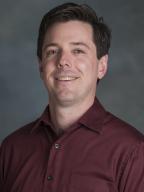
Biography
Education
- Ph.D., 2010, The Ohio State University, City and Regional Planning
- MCRP, 2008, The Ohio State University, City and Regional Planning
- B.S., 1994, The Ohio State University, Chemical Engineering
Courses Taught
- URBS 150 – Urban Scene
- URBS 300 – The Planning Idea
- URBS 310 – Growth and Sustainable Development of Cities
- URBS 340A – Quantitative Research Methods
- URBS 400 – Planning for the Natural and Built Environment
- URBS 450 – Urban Problems Seminar
- URBS 490C – Field Work
- URBS 640 – Seminar in Planning for Communities and Local Economic Development
- URBS 680 – Quantitative Analysis in Urban Planning
- MPA 620 – Research Methods for Public Administration
- MPA 642D – Community and Economic Development
- MPP 645 – Urban Economic Policy
Selected Publications and Presentations
PEER-REVIEWED ARTICLES AND BOOK CHAPTERS:
Olwert, C., Tchopourian, J., Arellano, V., Woldeamanuel, M. (2015). Stranding cycling transit users on Los Angeles’ Orange Line Bus Rapid Transit. Journal of Public Transportation, 18, 1, 1-15.
Olwert, C., Guldman, J-M. (2012). A computable general equilibrium model of the city: Impacts of technology, zoning, and trade. Environment and Planning A, 44, 1, 237-253.
Engelhardt-Bergsjo, H., Tyers, D. B., Swenson, J.E. ,Irby, L. R., Zimmer, J. P., Olwert, C. T., Engelhardt-Bergsjo, K. (2009). Monitoring ungulate carcasses and grizzly-bear scavenging on the Northern Yellowstone Winter Range. Intermountain Journal of Sciences, 15, 7-17.
CONFERENCE PRESENTATIONS:
Association of Collegiate Schools of Planning. Geographically weighted regression identification of station types near rapid transit in Los Angeles. October 14, 2017.
Association of Collegiate Schools of Planning. A spatial statistical approach to modeling restaurant locations near rapid transit in Los Angeles. November 5, 2016.
American Planning Association California. Collaborative planning in Northridge South: The making of a Los Angeles Great Street in suburban San Fernando Valley. October, 23, 2016.
Association of Collegiate Schools of Planning. Retailers in and around Los Angeles’ mass transit infrastructure. October 24, 2015.
Association of Collegiate Schools of Planning. Stranding cycling transit users on Bus Rapid Transit: On-vehicle bicycle storage utilization on the Los Angeles Orange Line. November 2, 2014.
CSUN MPS Alumni Chapter. How to Use Census Data. May 31, 2014.
Association of Collegiate Schools of Planning. A Computable General Equilibrium Model of the City: Impacts of Locational Restrictions and Zoning. October 7, 2010.
PennDesign. Spring 2010 PhD Lecture Series. A Computable General Equilibrium Model of the City with Optimization of its Transportation Network: Impacts of Changes in Technology, Preferences, and Policy, University of Pennsylvania, School of Design. April 5, 2010.
Knowlton School of Architecture. City and Regional Planning Lectures. A Computable General Equilibrium Model of the City with Optimization of its Transportation Network: Impacts of Changes in Technology, Preferences, and Policy. March 8, 2010.
Bio and Research Interest
Craig Olwert is an Assistant Professor in Urban Studies and Planning having started in Fall 2011. He has been the undergraduate advisor since Spring 2013 and the faculty advisor for the Urban Planning Students of Northridge since Fall 2011. His research interests revolve around the general idea of city form and sustainability. Past research about modeling city form and cycling transit users evaluate the city, theoretically and empirically. Current research on retail uses around mass transit help empirically understand city form with an economic focus. Through the Field Work course, he has developed positive relationships with the local neighborhood councils and city council districts.
Craig has always been quantitatively inclined, having developed a computable general equilibrium model of a city for his dissertation at The Ohio State University. His application of technical skills have extended to include wildlife and wilderness studies while working for the U.S. Forest Service in Montana and Wyoming where, as a wilderness ranger, he was involved with studies on campsite deterioration across wildernesses and changes and determinants of grizzly bear habitat.
With an undergraduate in Chemical Engineering, Craig was employed by ExxonMobil for seven years as a process contact engineer, an environmental engineer, a financial analyst and as an internal auditor. These positions increased the depth and understanding of bureaucracies and environmental issues.
